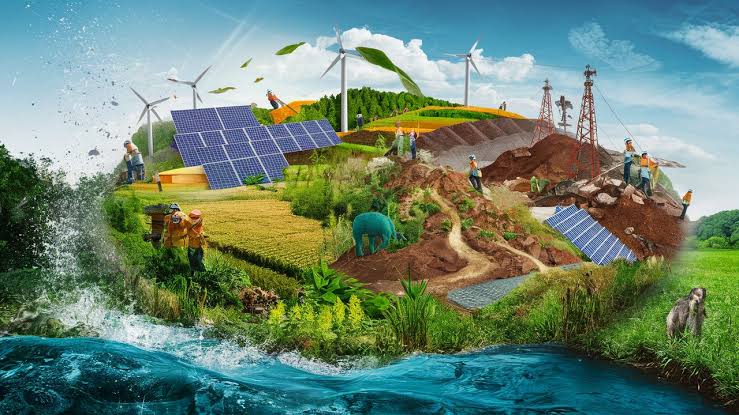
Natural resources are materials and components found in the environment that are used by humans for various purposes, including sustenance, energy, production, and manufacturing. They are typically divided into two categories: renewable and non-renewable resources.
1. Renewable Resources:
These are resources that can be replenished naturally over time, often through processes that occur naturally in the environment. They are sustainable when managed properly.
- Solar Energy: Energy from the sun, which can be harnessed using solar panels to produce electricity or heat.
- Wind Energy: Wind is used to generate electricity through wind turbines.
- Water (Hydropower): Flowing water in rivers or dams is used to generate electricity (hydropower) or for irrigation and other uses.
- Biomass: Organic materials such as plants, trees, and waste can be used to produce energy.
- Geothermal Energy: Heat from the Earth’s interior, used for heating and electricity generation.
2. Non-Renewable Resources:
These are resources that are limited in supply and cannot be replenished on a human timescale. Once they are depleted, they are gone for good.
- Fossil Fuels: These include coal, oil, and natural gas. They are used for energy production, transportation, and manufacturing.
- Minerals: Resources such as gold, silver, iron, copper, and diamonds, which are used in electronics, construction, and jewelry.
- Nuclear Fuels: Uranium and other radioactive elements used for generating nuclear energy.
3. Other Categories of Natural Resources:
- Land: The land itself is a resource used for agriculture, forestry, construction, and habitation.
- Forests: Trees provide timber, fuel, and other materials, and also play a crucial role in regulating climate and maintaining biodiversity.
- Wildlife: Animals and plants contribute to ecosystems, provide food, and are often used for medicinal or ornamental purposes.
- Air: Fresh air is vital for respiration and many processes on Earth, though it is increasingly threatened by pollution.
Sustainable Management:
To ensure the long-term availability of natural resources, sustainable management practices are necessary. This includes conservation efforts, reducing waste, recycling materials, and transitioning to renewable energy sources to mitigate the depletion of non-renewable resources.

Leave a Reply